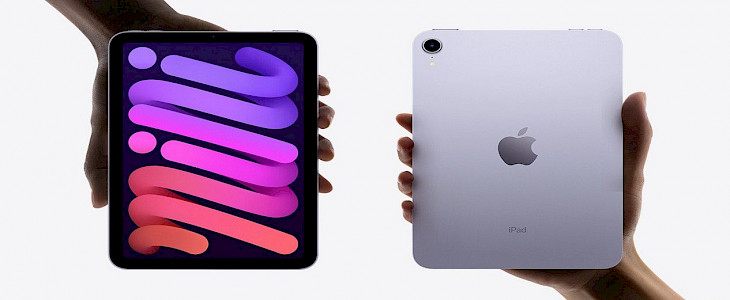
Apple has always been one of the best companies in the market when it comes to innovation in hand-held devices. Remember back during the launch of the iPhone 1, when Apple patented and launched Multi-Touch.
This time Apple has outdone themselves and introduced a brand new screen-navigation technique for their iPad Mini, called Jelly Scrolling.
What is Jelly scrolling?
"Jelly Scrolling" is a term used to describe "the experience of a display screen in which one part of the screen appears with a delay. In this instance, when scrolling through a site, the message on the left is ahead of time and appears to be quicker than the one to the left. This creates an unbalanced scrolling experience. This is why we call it Jelly scrolling.

These are normal LCD actions that result from the way these kinds of screens rejuvenate. The changes to the content on the screen happen in the form of a "wave" from one side of the screen to the opposite. Think of every update cycle like a brief inspection of the display. The majority of them are updated to 60 Hz (or sixty instances per second).
Jelly scrolling can be seen when the instructions that the display revitalizes are on the left or right side of the display you're currently seeing. If the device responsible for reviving the screen of your monitor is located at the bottom or on the top of the display, it could have some lag. But it won't result in a "jelly-like" experience.

The term can also be referred to as scan-out skewing and isn't only found in LCD screens. The massive CRTs of the past and the latest OLEDs both rejuvenate similarly, which is why they are vulnerable to jelly scrolling.
Some gadgets are more vulnerable than others.
The way a screen is integrated into a device could help to hide the effect of jelly scrolling almost completely. For example, the screen you're using to read this post is probably showing jelly scrolling when used in a particular orientation.
By placing the display controller on the upper edge of the display to ensure that it is regenerated from top to bottom, jelly scrolling can be gotten off.
Another important aspect is the speed of time at which the screen refreshes. It's more difficult to discern the jelly scrolling on a screen that is rejuvenated at 120Hz as contrasted to a display that is revitalized at 60Hz.

A case in point: it's the sixth-generation iPad mini that displays jelly scrolling in its image alignment, given that the controller for the display screen is situated on the straight axis of the panel. The iPad Pro 11-inch has its display screen controller in the same spot. Still, because the Promo display screen refreshes at 120Hz, Jelly scrolling is more difficult to locate (yet it is there).
The issue of Jelly Scrolling for iPad 6 mini users
iPad mini 6 owners have complained about the "jelly scrolling" problem that is affecting certain iPad mini versions when they use devices in portrait mode. Apple has now stated that this is normal for LCD screens.
"Jelly scrolling" refers to screen tears, which could cause images or text on one side of the display to slant downwards because of a difference in refresh rate. This can cause one part of the screen to appear like it's reacting faster than the other and is difficult to overlook after you've noticed it.
Apple stated to Ars Technica that jelly scrolling is the normal behavior for the LCD. Screens are designed to be refreshed line-by-line, which can create small delays between when the line at the very top and the lower part of the display refresh and can result in inconsistent scrolling issues.
Winding-up
Jelly Scrolling right now is just a working progress that will get better with future upgrades. So, if you are planning on purchasing an iPad Mini. We would gladly advise you to go for it. Cus, issues aside, the iPad Mini is really a magical device.





